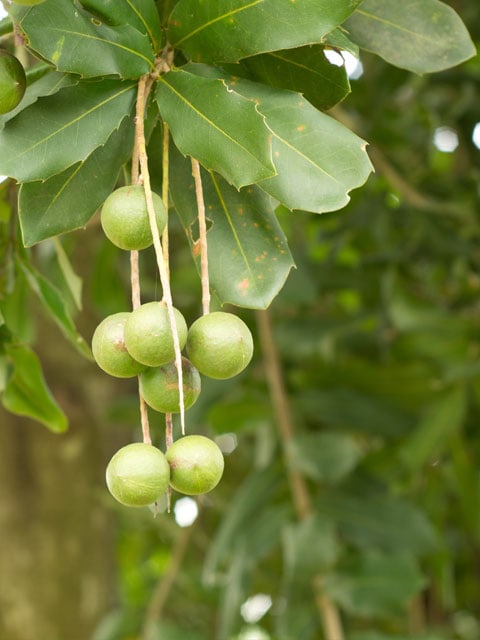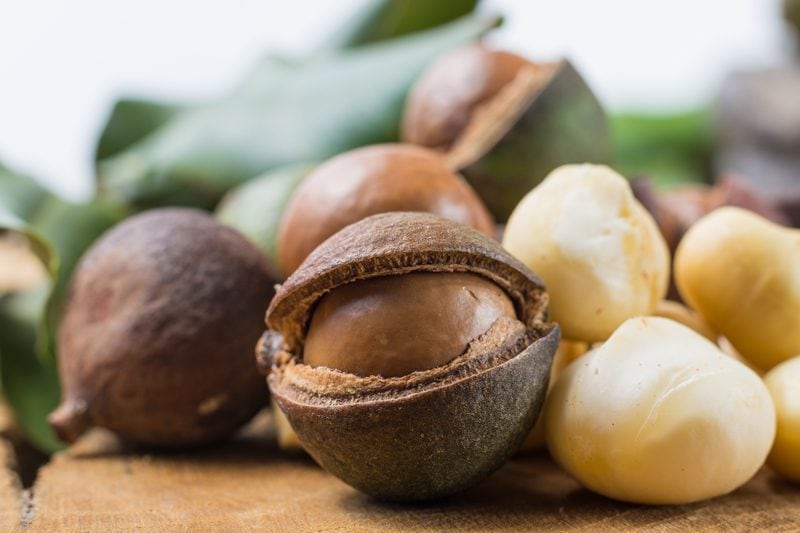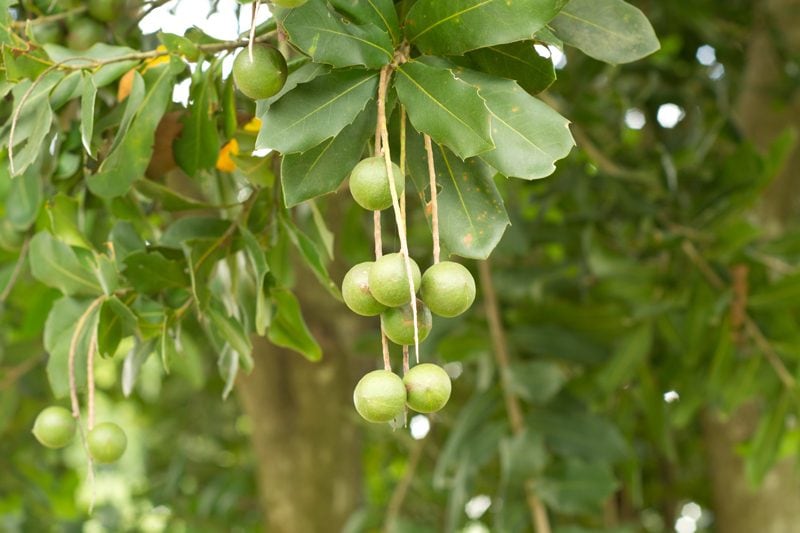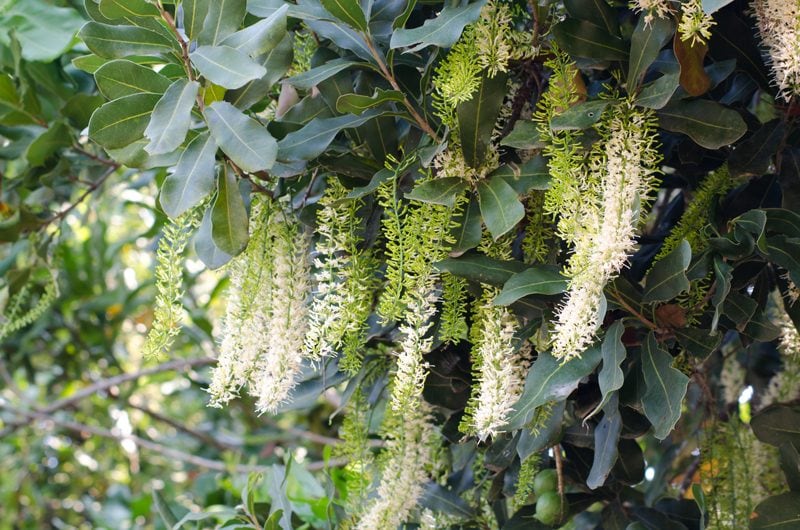


 Add to favorites
Add to favorites
Macadamia nuts have a very hard seed coat enclosed in a green husk that splits open as the nut matures. It holds a creamy white kernel containing up to 80% oil, which accounts for their rich, buttery flavor. It takes some serious muscle to extract the edible nut from its shell: 300 pounds of pressure per square inch to be exact, making it the hardest nut in the world to crack. And here my husband thought that I was a “hard nut to crack.”

The magnificent macadamia tree is the source of one of the more expensive, but richly flavored nuts prized for their sweet, soft meat. These large bushy trees are warm region plants only since they cannot tolerate any sort of freeze and produce the best yields in areas with high humidity and rainfall. Most of us associate macadamia nuts with Hawaii, but they also grow in some countries in Latin America, Africa, and Asia. In the continental United States, trees are found in California and Florida.

There is a ranch in Hawaii where 300,000-plus trees grow in lava rock with NO organic soil. To me… that is sort of mind-blowing… lava rock = growing trees?! Love learning this stuff!
Once trees have been planted, it takes four to five years for them to start producing, but by year six they should be well established and will continue to produce wonderful macadamia nut crops. But if a tree is started in the ground from a seed, it will take up to twelve years to start producing nuts. Now, who has time for that?

Macadamia flowers are called raceme which is a flower cluster that has up to 500 flowers on them. The flowering of the trees occurs over a four to six month period. The nuts mature at different times over the course of the year and since they are biennial, they alternate years of light and heavy crops. The trees require pollination during flowering, so beehives are usually imported into the orchards.
There are several varieties of macadamia nuts such as Cates, Beaumont, James, and others. Depending on the variety, the nuts may drop when they are ready for harvesting, or you may need to pick them off the trees.
Husking
Air Drying
When the nuts are first harvested, they have a high moisture content, and the natural oils have not yet developed. The nuts need to be air dried, on drying racks, in the shade, for at least two weeks to reduce the moisture content and to allow the oils to develop. After this, the nuts are ready to be delivered to the warehouse, or your home for drying.
Oven Drying
At the warehouse, the nuts are dried in a walk-in dryer, for at least another 48 hours up to 110 degrees (F). The shell will become brittle, so it is easier to crack the shell without damaging the nut meat. If you are lucky enough to get them after air drying, you can use a kitchen oven at the lowest warm setting, or a food dehydrator at the nut setting, around 104 degrees (F), for two to three days. Take a few nuts after 48 hours and test them by cracking them open and biting into them to see if they are crunchy. If they are still a little chewy, give them another 24 hours or so.
Husk and Shell
Macadamia Oil